One would think that in the oak woodlands, the most important predators would be mammals such as mountain lion, coyote and bobcat. But new field research is discovering that the most important predator may be rattlesnakes in terms of overall biomass. Rulon Clark, an assistant professor at California State University at San Diego, and his team of eight graduate and undergraduate students, are studying rattlesnakes and their prey at one of the newest University of California Natural Reserves, Blue Oak Ranch Reserve. The 3,300 acre reserve is situated on the west slope of Mount Hamilton, only 10 miles from San Jose.
Clark and his students have documented densities of rattlesnakes on the reserve that far exceed any they have previously encountered throughout California, including the remote Mojave Desert. Rattlesnakes have likely been left alone by humans at Blue Oak Ranch Reserve for many decades. Given the local abundance of wild prey, the snakes have reached population levels that may have been typical prior to centuries of persecution by ranchers and hunters, according to Clark.
The rattlesnake researchers, dubbed “Team Crotalus,” have just completed nearly two months of detailed studies of the interactions between the northern Pacific rattlesnake, Crotalus oreganus, and its preferred prey species the California ground squirrel, Spermophilus beecheyi. When confronted by predators, many animals engage in lengthy, conspicuous interactions involving stereotyped signals and displays. These antipredator signals have been studied mainly as warning signals directed toward conspecifics, even though they may also serve to communicate with predators. Studies of how these signals affect predators have been rare because predation is infrequent and difficult to observe in the field.
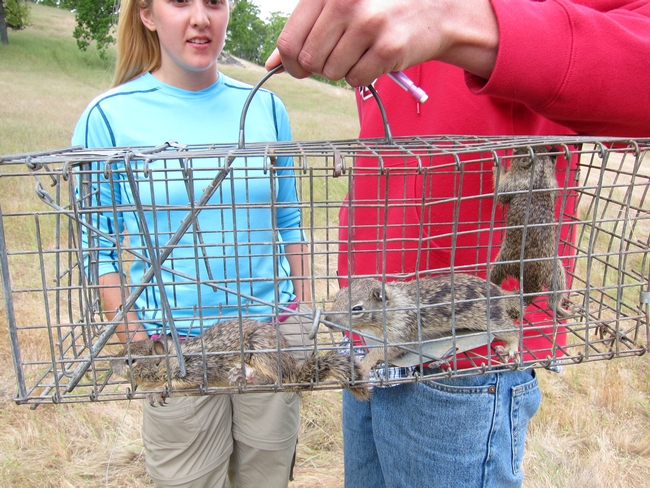
Team Crotalus has begun assembling a one-of-a-kind database of natural antipredator signaling interactions and predator responses. To do so, they are using a high tech assortment of tools. These range from radio telemetry transmitters surgically implanted in the rattlesnakes, to miniature, battery-powered webcams. The webcams transmit live video of snake/squirrel interactions several miles away to the reserve headquarters for recording and observation. The team also confronts snakes with a mechanical, taxidermied rodent affectionately named “Robosquirrel.” The Robosquirrel is programmed to make antipredator sounds and movements to snakes in experimental encounters. The bouts allow the scientists to test predictions of how predators and prey communicate in controlled experiments. (Watch a video of a robosquirrel being struck by a rattlesnake).
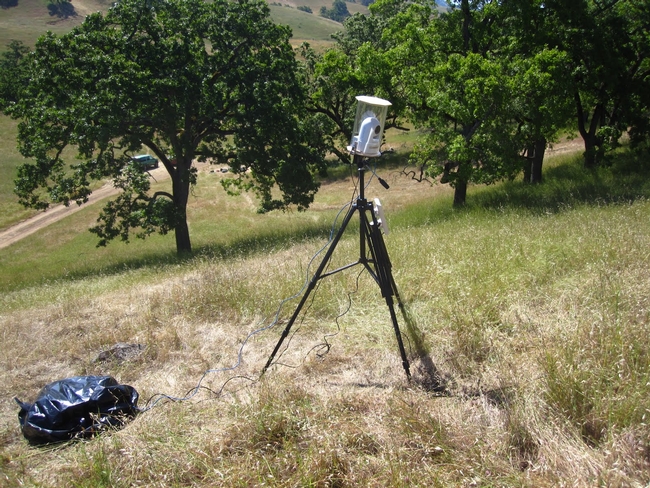
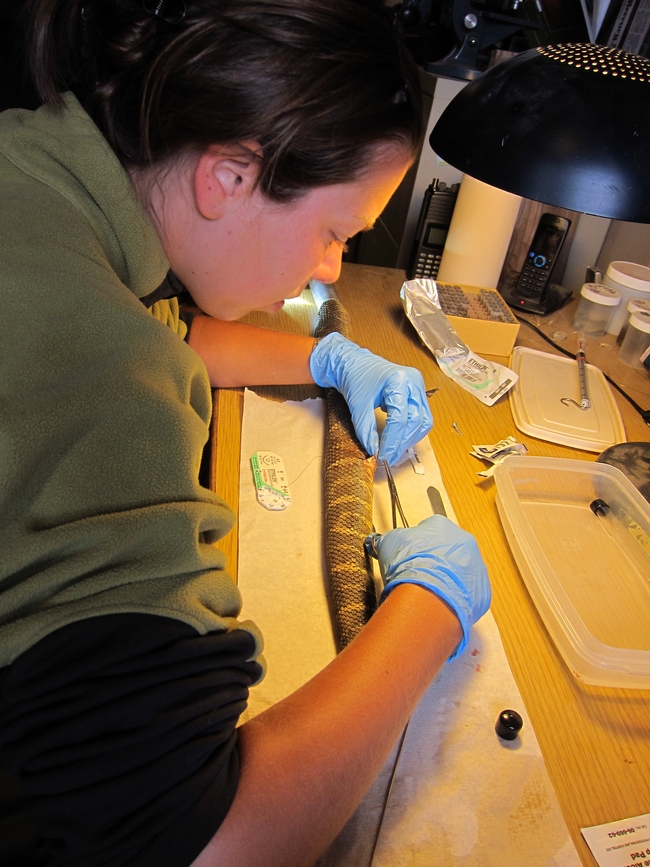
Team Crotalus research has focused on the behavior of rattlesnakes confronted by two prey species, ground squirrels and kangaroo rats. These two distantly related rodents have evolved sophisticated anti-snake behavior independently. Comparing the two rodents’ interactions will allow the scientists to examine the role of various ecological and organismic factors that shape predator-prey signaling interactions. Their unique approach combines these methods in studies that simultaneously consider both prey signaling behavior and predator responses in an experimental context. This system promises to provide novel insights into such areas as honesty in animal communication, antagonistic coevolution, and the role of animal sensory systems in shaping signaling behavior.
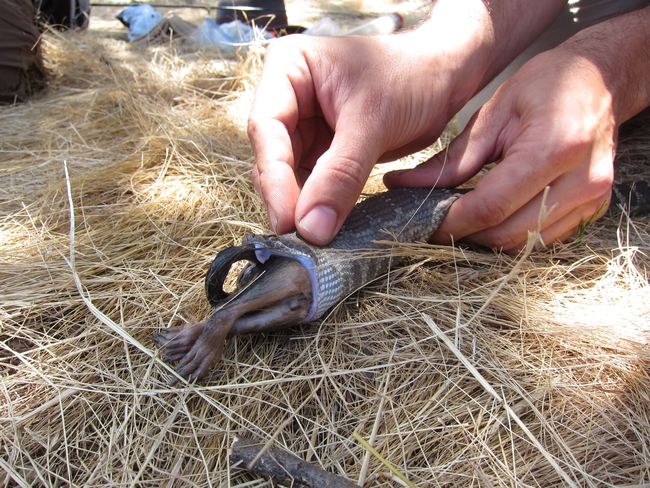
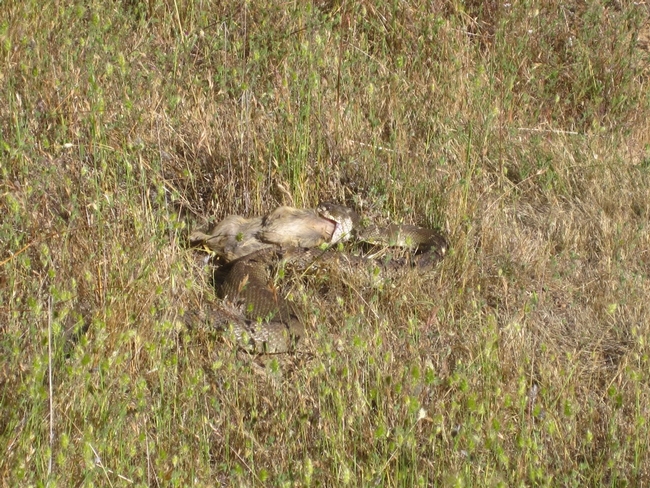
For more information:
Bree Putman’s Blog: Strike, Rattle and Roll http://strikerattleroll.blogspot.com/
Rulon Clark Lab http://www.bio.sdsu.edu/pub/clark/Site/Home.html
Blue Oak Ranch Reserve http://www.blueoakranchreserve.org
Contact information:
Rulon Clark <rclark@sciences.sdsu.edu
Hamilton Michael <mphamilton@berkeley.edu